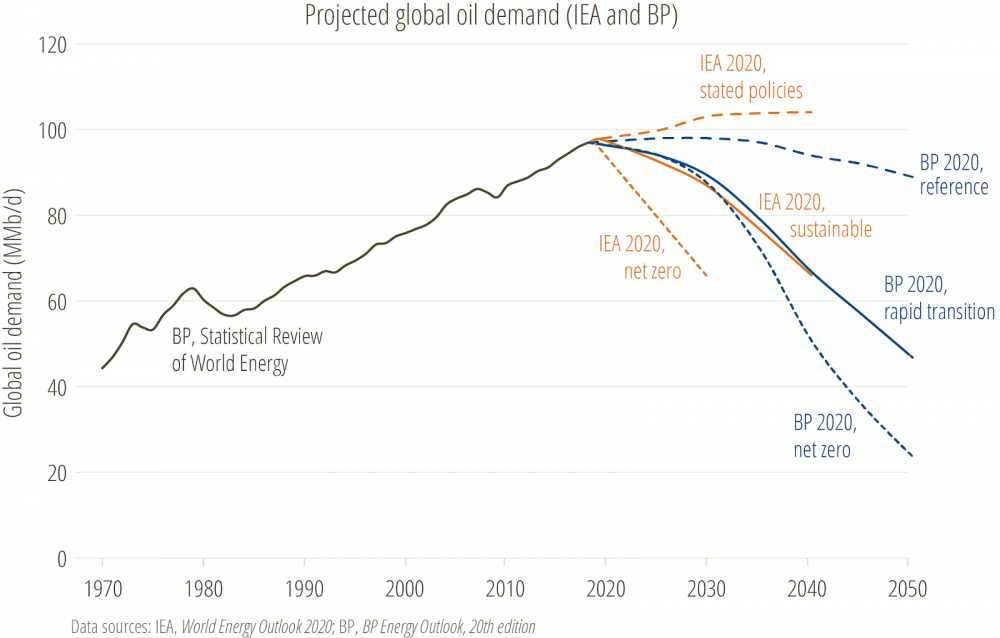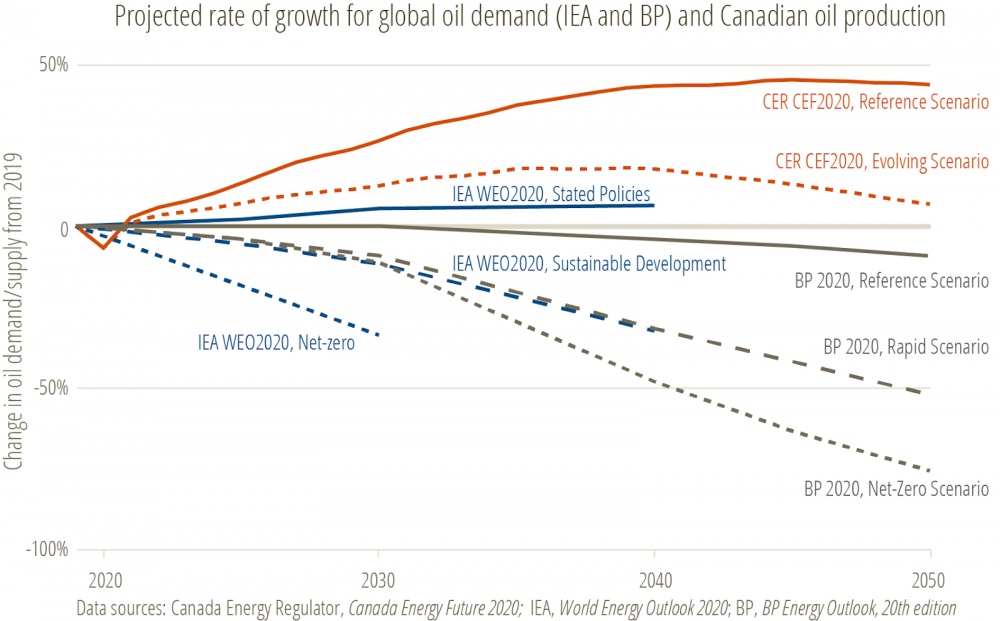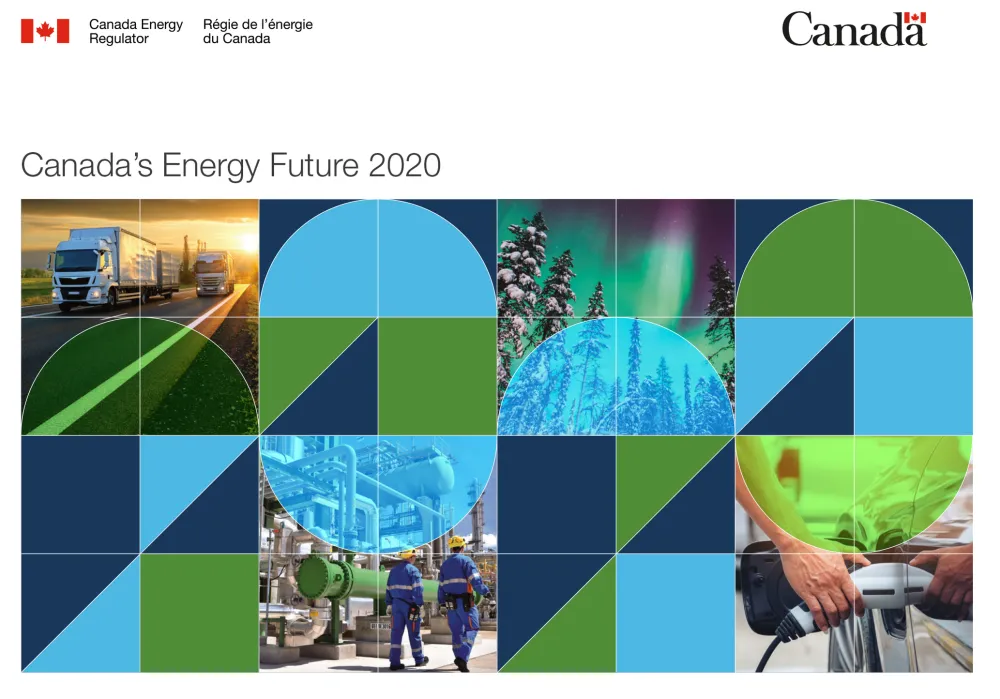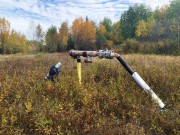This is the third instalment in a series exploring the future of oil in a decarbonizing world, and the implications for Canada’s oil industry. Our first piece, Evaluating the climate ambitions of Canadian oil companies, documents net-zero commitments from Canadian, U.S. and European oil majors. Our second post, For Canadian oil companies, time to decarbonize is running out, discusses a decline in oil demand and shows why adapting to global decarbonization trends is critical for companies in order to remain competitive. This installment discusses the Canada Energy Regulator’s energy outlook modelling and how it can help Canada’s energy sector, as a whole, navigate the energy transition underway.
In late November, the Canada Energy Regulator (CER) published Canada’s Energy Future 2020, its annual report modelling domestic energy supply and demand through 2050. For the first time, the report situated this modelling in the context of Canada’s commitment to reach net-zero emissions by 2050. This is welcome framing, especially since it required the CER to acknowledge that even the most ambitious of the report’s scenarios do not come anywhere close to fulfilling Canada’s net-zero goals. It is an important message to hear from the federal energy regulator: Canada is not on track to meet its climate-change commitments. But the CER must do more than just indicate the country is off course — it needs to help chart a path to net-zero.
The outlook
To get a sense of how CER’s energy outlook measures up, we will compare it with global oil demand scenarios produced by the International Energy Agency and BP (featured in our previous post in this series). All scenarios produced by these two organizations point to the same trend: nearly four decades of continued oil demand growth is coming to an end.

Figure 1. Global oil demand outlooks from the IEA and BP
Notes: BP’s rapid transition and net-zero scenarios respectively limit global warming to 2º and 1.5ºC. IEA’s sustainable scenario is consistent with a world in which temperature increase is limited to no more than 2ºC (and to 1.5ºC by 2100, if negative emissions technologies are deployed in the second half of this century).
BP’s Energy Outlook 2020 modelled three scenarios: a reference scenario, a rapid transition scenario, and a net-zero scenario. The reference scenario was the most conservative, showing global demand for oil plateauing through this decade before dropping, while the other two showed global oil demand sharply declining.
Similarly, the IEA’s World Energy Outlook 2020 modelled three scenarios: a stated policies scenario, a sustainable development scenario aligned with 2ºC of warming and multiple sustainable development goals, and a net-zero scenario aligned with 1.5ºC of warming. Like the BP scenarios, the stated policies scenario showed a near-term levelling off of global oil demand and a dramatic decline in the two scenarios that describe the world acting to limit climate change.
By comparison, the CER modelled two scenarios. In addition to a reference scenario, showing no new climate policy going forward, it also created an “Evolving Energy System” scenario, which assumes that the pace of climate policy implementation and technology deployment remain consistent over time. It assumes we continue on a trajectory similar to the one we are currently on with adjustment for the effects of the pandemic.
Figure 2 provides a comparison of the CER’s scenarios against the BP and IEA scenarios. Specifically, it compares Canadian oil production for the CER scenarios against global oil demand for the BP and IEA scenarios, using 2019 as a baseline.

Figure 2. Projected rate of growth for global oil demand (IEA and BP) and Canadian oil production
The graph illustrates how the CER’s Evolving scenario projects growth in Canadian oil production outpacing the growth of global oil demand even in the least ambitious IEA scenario. Whereas the IEA stated policies scenario shows global oil demand growing approximately six per cent and then plateauing in the coming decades, the CER evolving scenario shows Canadian oil production growing by 18 per cent from current levels and not peaking until 2039. By comparison, BP’s net-zero scenario shows global oil demand declining 48 per cent by 2040.
The CER scenario is out of step with leading energy outlooks on the key variable of domestic oil production. In comparison with the IEA and BP scenarios, it is also evident that the CER is not modelling a full range of possible energy futures, nor does it provide enough insight into what Canada’s energy system would look like if the country was on track to achieve its climate commitments and build a thriving net-zero economy.
Finding the path
One tool that will help orient decision makers to Canada’s climate commitments is a domestic energy supply and demand outlook that is aligned with a world in which global warming is safely limited to 1.5ºC.
A 1.5ºC scenario would:
- Assume that the world is successfully taking steps to limit climate change to 1.5ºC;
- Meet or exceed Canada’s 2030 and 2050 targets;
- Integrate global energy demand and link the market for all Canadian energy exports (including fossil fuels, electricity, and hydrogen) to global demand under a 1.5ºC limit
Scenarios are not forecasts, and they do not reveal what the future holds. Instead, they show the speed and direction of travel. In the short term, a 1.5ºC scenario will provide an assessment of the extent to which scaling up existing technologies and policies can be relied upon to achieve national goals. This can help identify remaining gaps and show where technological, policy or social innovation is needed. The details of such a scenario would, rightly, be subject to debate. In the context of charting a net-zero pathway, robust examination of assumptions is necessary.
A crucial tool for decision makers
Regardless of the details, the scope and scale of change described in a 1.5ºC scenario would be an invaluable tool to help navigate the transformation of Canada’s economy and energy system. It offers decision makers a means to assess infrastructure projects, public policies and government spending, and ensures the choices being made today are consistent with decarbonization pathways.
Such a tool can also help support the future and livelihood of local workers and their communities in the transition to a low-carbon global economy.. By showing prospects for the energy sector, individuals, communities and governments will have information toproactively plan and leverage emerging opportunities.
Finally, this tool is valuable for Canadian companies and investors seeking to make business decisions in a quickly decarbonizing environment. Ultimately, it will provide a basis to assess whether business models are compatible with Canada’s net-zero goal – and, if not, how to adapt accordingly.
In order to successfully navigate the energy transition and avoid catastrophic climate change, Canada needs to chart a course toward its net-zero goal. A 1.5ºC scenario will provide information vital to the journey.






